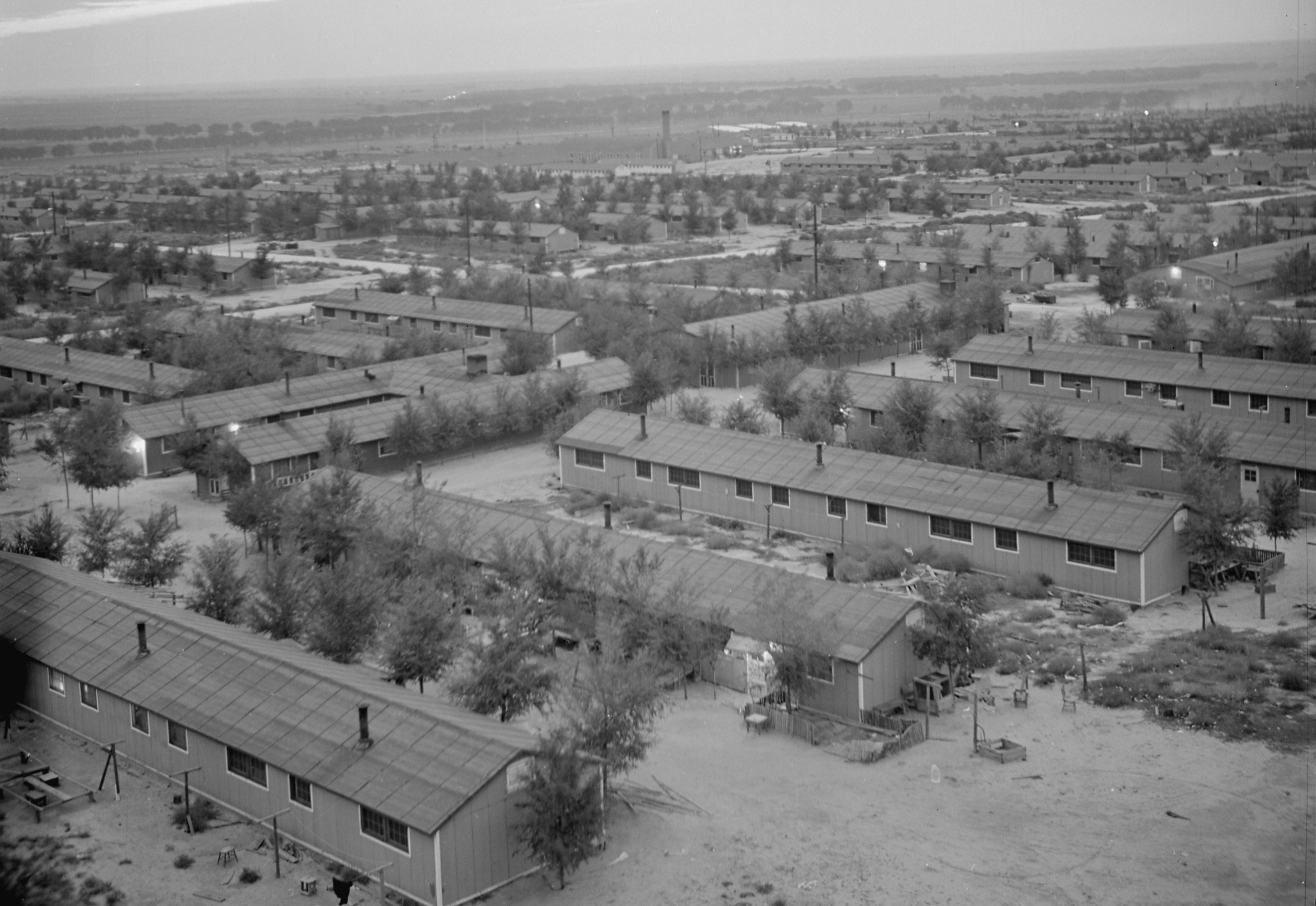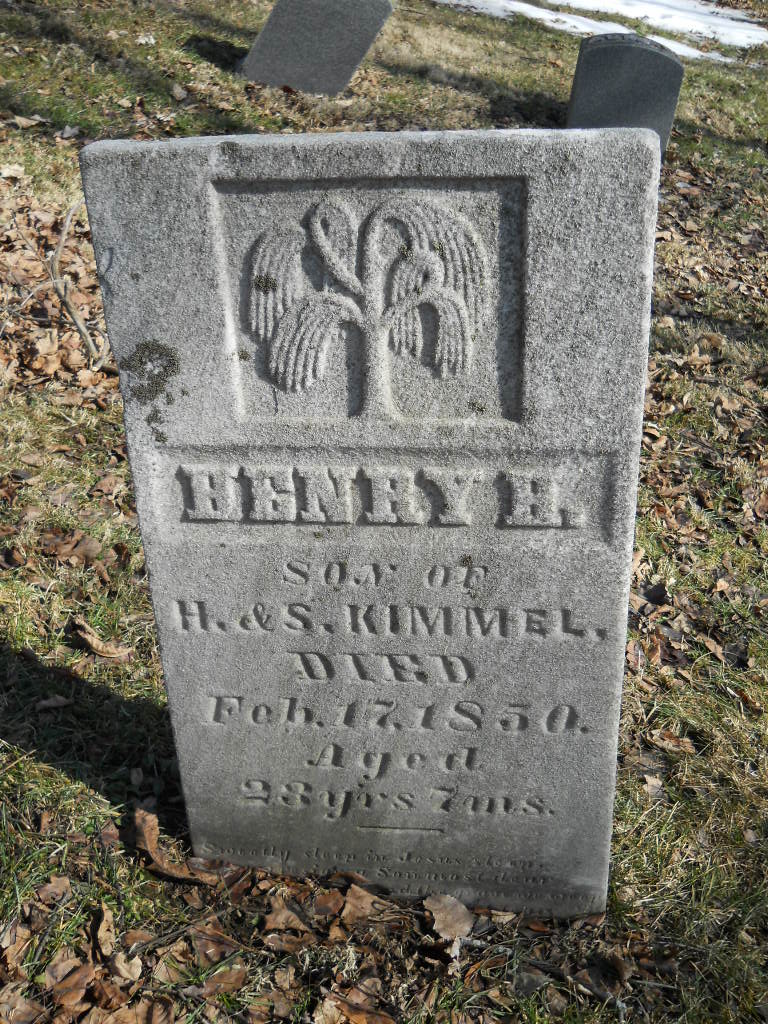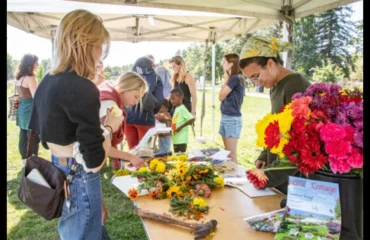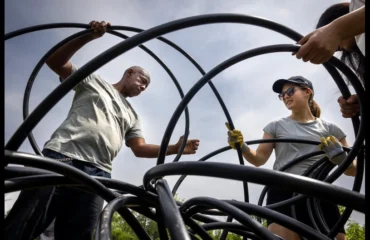Archaeology that empowers
To want to be remembered is human. To collectively do this by respectfully analyzing what past generations have left behind — and learning from it — is modern archaeology.
Sometimes that means focusing on the not-so-distant past by talking to survivors to help shape the re-telling of a site’s history. Or it can be recognizing the interests of a community, and seeing how it’s evolved, by examining existing artifacts. Other times, it’s seeing how families worked and played prior to a sudden event, like a war or battle, that disrupted their lives.
As a UM-Dearborn student, Anthropology senior William Smith has done all three.
When taking part in archaeological research — archaeology is the branch of anthropology that analyzes found objects or architectural remnants to study human culture — Smith said he’s reminded that people of the past aren’t much different than we are today.
“The work archeologists do reminds us that people — whether they lived recently or hundreds or thousands of years ago — had ideas, goals, families,” he said. “To learn from history, many people need to feel connected to it. Reading that a community lived on a site during a period of conflict is one thing. And holding a lead rifle ball that appears to have been fired during that time period is another. That’s when you begin to empathize and potentially learn from someone else’s past experience.”
Recently finishing a research experience at the Amache Japanese American Incarceration Camp in Colorado, Smith shares his archaeological experiences.
The Field Study: Amache Japanese American Incarceration Camp

Smith spent several weeks outside in 90-plus degree days working in the chalky, hard soil at the Granada Relocation Center, also known as Camp Amache, in Colorado.
In the open, mostly desolate area, even the wind was hot. “You’d think a breeze would cool you off — but not out there. Even when in the shade, it’s hot.”
Smith said his short-term experience with the weather was something thousands of Japanese Americans endured for years while locked behind the tall barbed-wire fences at this World War II incarceration camp. President Joe Biden’s administration recently signed a bill to federally protect the 10,500-acre site where citizens were forcibly incarcerated between 1942 and 1945.
“It’s a chapter of American history many people probably want to forget, but that’s why it needs to be preserved; we need to see how this impacted families so that we can have the reference when making decisions for the future,” Smith said.
Under the guidance of University of Denver Anthropology Professor Bonnie Clark, Smith was one of the 10 students nationwide who assisted with ongoing field study research at the site during the past four weeks. A field study is a survey or dig that finds fragments of items showing how people lived during a certain time.
While there, Smith said researchers discovered that a shallow body of water — previously thought to be a pond — had a drain. “The pond was being excavated, and they discovered a cement bottom with a pipe drain. So now we are pretty sure it could be used as a fountain for special occasions. More work needs to be done to confirm this, but it was really interesting to find the existence of a feature that we previously didn’t know was there.”
Smith said he also heard first-person experiences during Community Day, which is when survivors, their families and others in the Granada, Colo., community are invited to tour the former camp and share their oral histories.
Smith, who gave tours of the reconstructed Recreation Hall, said people recalled the sweltering heat and they talked about the ant infestations. But there were positive associations when it came to how the residents creatively channeled their talents and cultivated the land.
“There were gardeners. Even though the land was harsh, they knew what to do with the soil to make plants grow. They are proud of that. We’ve seen evidence of the nicely laid out gardens through careful placement of stones, wood that was repurposed for fencing, and a rose bush. This is not an environment where you’d expect to see a rose bush. They channeled their stress and anxiety into ways to create beauty around them,” said Smith. The Amache Rose — which has a bright pink flower — bloomed for the first time in 80 years in May.
Smith said the Amache Field Study experience is one he’ll never forget in his personal or professional life. And it will help shape his future career as an archaeologist.
“Archeologists of the past had a bad habit of taking things without talking to the community about what they were doing — it was the Indiana Jones mentality,” Smith said. “But that isn’t the best way to preserve history or learn from it. People are the drivers of history. So it’s important to, when possible, make sure the people and the community are involved. We are uncovering the past to educate people who may not know about a site — but the work should also empower the people who do.”
The Research: Free Church Cemetery Gravestone Iconographic Analysis

People chose the Free Church Cemetery to be their final resting place from the 1820s until the 1950s. Located in Washtenaw County’s Superior Township, the community that once thrived there is gone; and so is their church.
To learn more about this community, Smith didn’t excavate artifacts. Instead, he spent the past academic year examining the cemetery that remains. He analyzed iconography, gravestone shapes, fonts, inscriptions, plot sizes and more. Smith compared this data with historical documents, such as maps and tax records.
Here’s something he found surprising: Looking at the Free Church Cemetery gravestones with iconography, there was only one cross — but several examples of non-religious symbols like willow trees, urns and flowers.
Smith attributes this to a few reasons. One: a church didn’t appear on the site until 1855. Two: the church was non-denominational and welcomed a variety of Christian spiritual beliefs. Three: the cemetery’s first recorded burials took place in the 1820s — a time when natural elements like flora and fauna were popularly associated with death.
However, there were still religious symbols among the sites. The most frequently seen was an open book, symbolizing the Bible. Looking at the Free Church Cemetery’s iconography spreadsheet, Smith thought about how consumerism and representation in death intertwine.
“We all die. We want our loved ones to be remembered. But trends and available resources have an impact on how people are represented in death, and we can even see this in a cemetery from 200 years ago,” Smith said. “The open book iconography was a simpler design, basically a rectangle, that would be cheaper for a mason to carve and it would still give the same message as a more intricately carved religious symbol would.”
In addition to seeing how people expressed themselves in death and the role religion played, Smith said his research shows how existing artifacts can be studied to learn more about the people who once lived in a place without the potentially destructive tendencies (digging, removing artifacts, etc.) of archaeology.
Advised by Anthropology Associate Professors John Chenoweth and Rose Wellman, Smith’s project is among the 20 virtual student presentations in the College of Arts, Sciences, & Letters 2022 Sargon Partners Undergraduate Research Showcase Presentations. He recently applied to present his work at the 2023 Society of Historical Archaeology Conference. Watch his CASL Research Showcase presentation here.
The Course: Archaeological Field School and Lab Methods
Last fall, ANT 410: Archaeological Field School and Lab Methods students worked with the City of Monroe and with River Raisin National Battlefield Park to aid in preserving and interpreting the War of 1812 site for the public.
The class, which was taught by Associate Professor John Chenoweth, taught Smith how to excavate, identify artifacts and make records of their field work.
While at the Monroe County site, Smith and course partner Mohan Karanth found a pipe stem, ceramic shards and a rifle ball likely from the War of 1812 period. “We mapped and bagged everything that looked interesting,” Smith said. “We joked that we were playing: Is this an artifact or is this a rock?”
Smith said the rifle ball just looked like a marble-sized stone at first. But when they picked it up, it was heavy and they knew it could have significance. They confirmed what it was after labeling their find and bringing it to the campus lab, where they used an X-ray fluorescence spectrometer to analyze its components.
Shortly after the Fall 2021 course concluded, Chenoweth said that find, along with another rifle ball found on the site, adds a layer to what is known about the conflicts at River Raisin. “We’ve recovered a rifle ball that likely only could have been fired by the U.S. Kentucky militia and clearly hit something. Its location suggests that they were engaged in close-range fighting, not the long-distance duel with the British troops the historical record emphasizes.”
Smith said this introductory field study course solidified his interest in archaeology and helped him gain the skills and experience needed to conduct research and to work at nationally recognized historic sites like Amache.
“I’ve had great experiences at UM-Dearborn. My professors are active in research and they are familiar with the current state of anthropology,” he said. “You get educated and experienced professors — some of the best minds I know — in a small setting. And, even with everything else our professors are doing, they are most focused on making sure we succeed.”
Professor Chenoweth will teach ANT 410 in Fall 2022. It is open to UM-Dearborn, UM-Ann Arbor and UM-Flint students, as well as the public who wish to register as alumni, retiree or guest students. Interested in the course? Reach out to Professor John Chenoweth.


